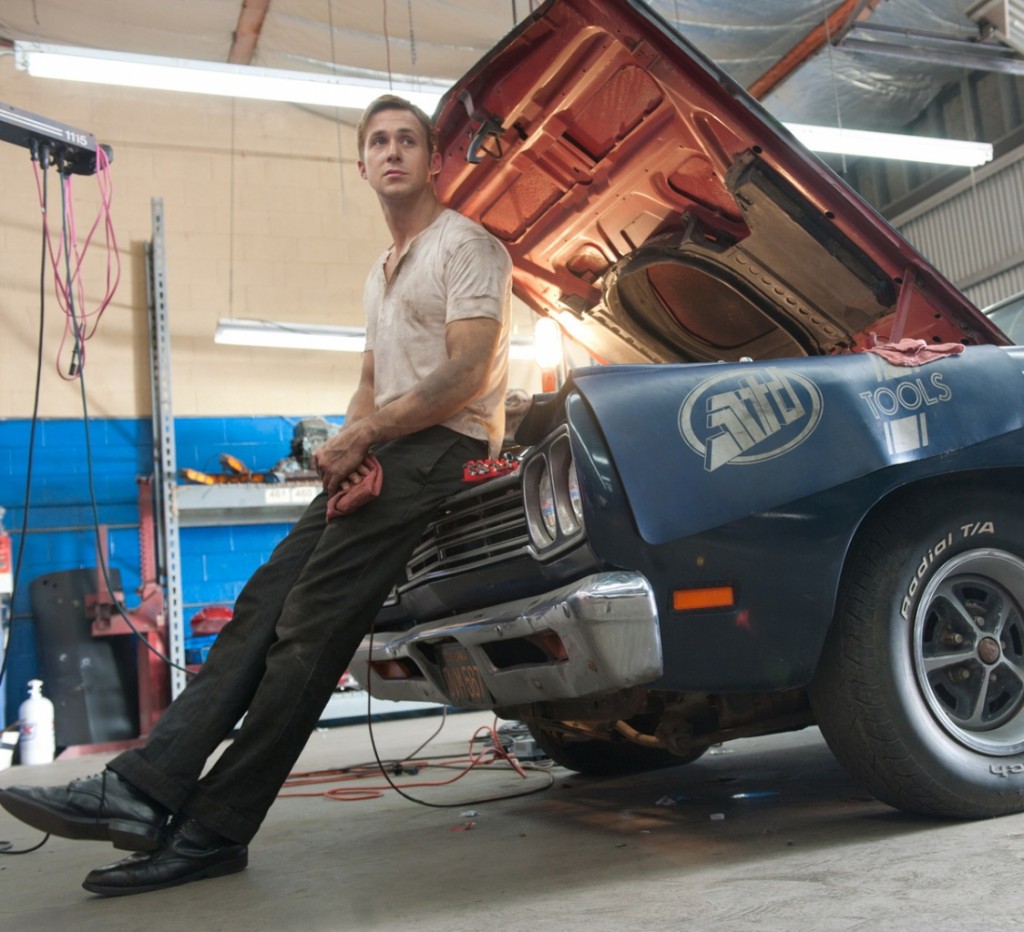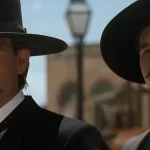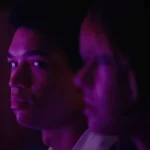Clean Getaway, by Matt Warren
Nicholas Winding Refn’s Drive opens this Friday seemingly readymade for cult status. Whether or not it it’s a hit at the box office, the film’s perfect storm of stylish neo-noir genre trappings, pedigreed cast, stellar advance notices, and intangible “cool factor” have already alchemized into rabid anticipation among film geeks. And geeks, always starved for the Next Great Movie, are already hungry to inaugurate Drive into the canon, where it will live on forever in the form of artisanal Alamo Drafthouse posters and hipster Halloween costumes. The only question is, does Refn provide the goods?
Mostly. But what Refn delivers isn’t necessarily what viewers may expect. Drive isn’t a propulsive car chase flick, bloody revenge actioner, or intricate crime drama. It’s slower, simpler, and more meditative than that. The plot isn’t built on double-crosses and thwarted ambition, but rather bad luck and miscommunication. The dialogue is minimal, and the characters are strictly archetypes, not people. Refn has described the film as a fairy tale. That makes sense, but only in the original, grim-and-Grimm sense of the word “fairy tale.” Disney princesses won’t find much to latch onto here, unless they also have a fetish for stabbing forks into people’s eyeballs. By the way, Zach Snyder just read that last sentence and instantly ejaculated in his cargo shorts (I just saw Sucker Punch for the first time—wow.)
Is it possible to have a minimalist film that’s also incredibly stylized? Is this a stupid question? I can’t tell. But it’d be difficult to argue that Drive doesn’t deserve the adjective “glossy,” despite the fact that Gosling’s nameless protagonist says maybe 35 words the entire film. And fourth-billed Christina Hendricks is in the movie for about five minutes. Not five minutes cumulative screen time, five minutes from introduction to exit. Structurally and aesthetically, Refn’s film struck me as the neo-noir cousin of Ti West’s 2009 horror pastiche The House of the Devil, which at times seemed almost like an academic experiment in how much build-up one could sustain relative to how brief a climax. It’d be wrong to call Drive a triumph of style over substance. It’s more like Drive is the product of some alternate universe where atmospherics and iconography are held in much higher cultural esteem than characters or storytelling.
But what, you ask, is the story? Shut up, I’ll tell you. Based on a book by veteran pulp novelist James Sallis, Drive features Gosling as a soulful Hollywood stunt car driver and avid driving gloves enthusiast who moonlights as getaway driver for, you know, crime stuff. Smash-n-grabs, rip-n-runs. That sort of thing. After an exhilarating prologue that recalls the great anti-car chase that opens Christopher McQuarrie’s The Way of the Gun, Drive slows to much more measured pace to follow Gloves as he broods his way around a neon-lit L.A. drifting from gig to gig. By day, he works in the auto garage of his not-so-squeaky-clean sidekick/mentor Shannon, played with craggy aplomb by loveable badass Bryan Cranston. Gradually, Gloves befriends and falls in love with his next door neighbor, Irene (a convincingly crushworthy Carey Mulligan.) But when Irene’s estranged husband Standard (Oscar Isaac) returns home from prison, Gloves unwisely offers his automotive expertise to Standard to help pull off a pawn shop robbery in order to clear up some lingering mob debts. Would it surprise you to know that things don’t exactly go according to plan? It should not.
Hey, you know what’s worth fifteen dollars? Albert Brooks as a bad guy. Brooks gives the film’s best performance, and plays its closest thing to an actual, recognizable human being. His Bernie Rose is wonderful comic creation: a low-level mobster and reformed B-movie producer who is as surprised as anyone to discover that circumstances have suddenly made him the villain in a blood-drenched criminal conspiracy. He’s a funny, friendly, uncle figure for whom murder is a necessary—if annoying—aspect of the job, like filing a tax extension or balancing a debit account. The final scene between Brooks and Cranston Shannon is the film’s high point, encompassing everything Drive does well, from tone, to visuals, to viscera.
Drive is a must-see, but not necessarily a must-love. It’s a languid, melancholy crime yarn that’s a lot more Meek’s Cutoff than Fast Five, with a protagonist who’s less Harry Callahan than Jason Voorhees. It’s either an above-average genre entry elevated to pseudo-profundity by its director and cast, or a candy-colored pop art deconstruction of well-worn genre clichés. Either way, it’s effective art. If the stylish execution of stylish executions sounds like it’s in your wheelhouse, go for a ride.































